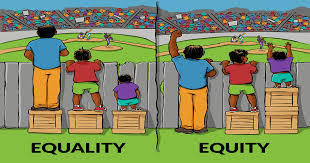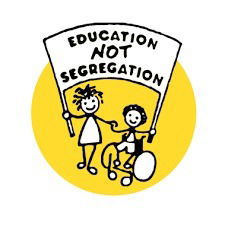Equity & Equality in the Inclusive Classroom
Educator Resource
About Us
Most educators can agree that equity is of upmost importance, however many are not sure how to go beyond definition into practice. Many may not fully understand what is meant by equity and the difference between equity and equality and how this understanding can change educational practices and outcomes.
It is the Goal of this educational blog to inform and support educators in their development of educational practices and systems within the inclusive classroom to support all students.

About the Creator

She currently works as the director of Special Education in an urban charter school in Southeastern Pennsylvania where she has been for the past six years. She is an adult with Dyslexia who has been in and/or around special education most of her life. Martina is the mother of a child with Autism and special education and inclusion are very dear to her heart.
Articles
Although these terms are often used interchangeably they are in fact very different. Understanding the differences in the meanings is essential when trying to develop a truly inclusive classroom. Educators must understand the fundamental differences in order to resolve issues that may be faced by disadvantaged students.
Read MoreWith the increase in diverse populations within the US educational system as well as the inclusive classroom being deemed appropriate for students who struggle creating equity is of upmost importance.
Read MoreFor this article, an educational organization’s policy regarding equity, equality, or equal opportunity is reviewed and discussed. The use of federal legislation and court cases that define compliance to educational equity was used as the basis for this examination.
Read MoreDoes Race to Achieve Diversity Initiative Provide an Equitable Education for Postsecondary Students?
This article explores The Office for Civil Rights (OCR) guidance on how schools can pursue racial diversity. School districts and Postsecondary institutions have flexibility, for example, to avoid racial isolation through decisions about siting schools and academic programs, drawing school attendance zones, aligning grades between schools, and setting enrollment/transfer policies.
Read MoreTraditional views of post secondary students must change to reflect todays diverse student populations. Students from underserved communities should be supported and guided to ensure educational success.
Read MoreWhat is the Opt Out Movement and why are parents choosing to Opt Out.
Read MoreMany programs aimed at creating Equity in education have fallen short of any real change. Rhode Island began rigerously investigating and funding opportunity grants in 2016. This article discusses the details and outcomes of one such program.
Read MoreThe de-tracking movement and one schools journey to inclusive classroom practices.
Read MoreHow 21st Century Community Learning Centers initiative success in one school district is building community engagement and partnerships to help create equity in an area of poverty.
Read MoreContact Us
- Wallingford, Pennsylvania, United States











